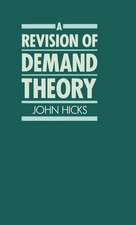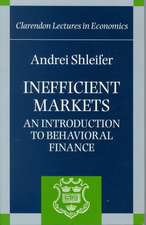The Birth of the Business Cycle (RLE: Business Cycles): Routledge Library Editions: Business Cycles
Autor Philip E. Mirowskien Limba Engleză Paperback – 28 feb 2017
| Toate formatele și edițiile | Preț | Express |
|---|---|---|
| Paperback (1) | 272.97 lei 43-57 zile | |
| Taylor & Francis – 28 feb 2017 | 272.97 lei 43-57 zile | |
| Hardback (1) | 1170.29 lei 43-57 zile | |
| Taylor & Francis – 23 mar 2015 | 1170.29 lei 43-57 zile |
Preț: 272.97 lei
Preț vechi: 326.74 lei
-16% Nou
Puncte Express: 409
Preț estimativ în valută:
52.23€ • 54.67$ • 43.47£
52.23€ • 54.67$ • 43.47£
Carte tipărită la comandă
Livrare economică 31 martie-14 aprilie
Preluare comenzi: 021 569.72.76
Specificații
ISBN-13: 9781138858176
ISBN-10: 113885817X
Pagini: 332
Dimensiuni: 156 x 234 x 23 mm
Greutate: 0.48 kg
Ediția:1
Editura: Taylor & Francis
Colecția Routledge
Seria Routledge Library Editions: Business Cycles
Locul publicării:Oxford, United Kingdom
ISBN-10: 113885817X
Pagini: 332
Dimensiuni: 156 x 234 x 23 mm
Greutate: 0.48 kg
Ediția:1
Editura: Taylor & Francis
Colecția Routledge
Seria Routledge Library Editions: Business Cycles
Locul publicării:Oxford, United Kingdom
Public țintă
General, Postgraduate, Professional, and UndergraduateCuprins
1 . A Proposed Taxonomy of Thought About Macroeconomic Instability 2. Optimism and Oblivion in the Seventeenth Through the Nineteenth Centuries 3. Twentieth Century Theories of Macroeconomic Instability 4. The Birth of the Business Cycle, Part 1 5. From the Economics of Ceremonial Adequacy to the Economics of Cumulative Change 6. An Institutionalist Theory of the Business Cycle 7. The Birth of the Business Cycle, Part 2 8. The Rate of Profit in the Eighteenth Century 9. A Chronology of Eighteenth Century British Instability
Descriere
Discussing economic theory and English economic history from the eighteenth century until the late 1970s this volume discusses among other things fixed capital and problems with the definition of the premodern economy as well as providing a chronology of 18th century business cycles.
























